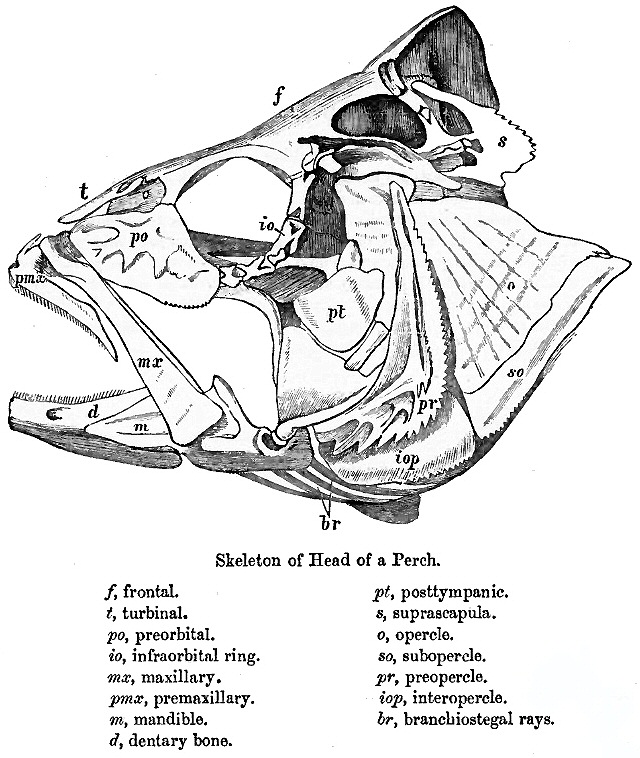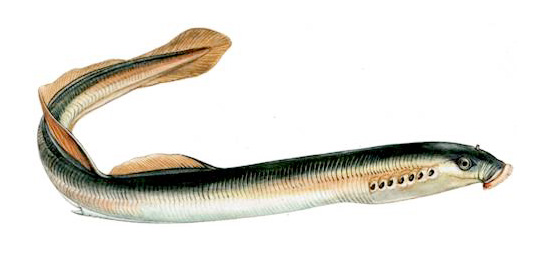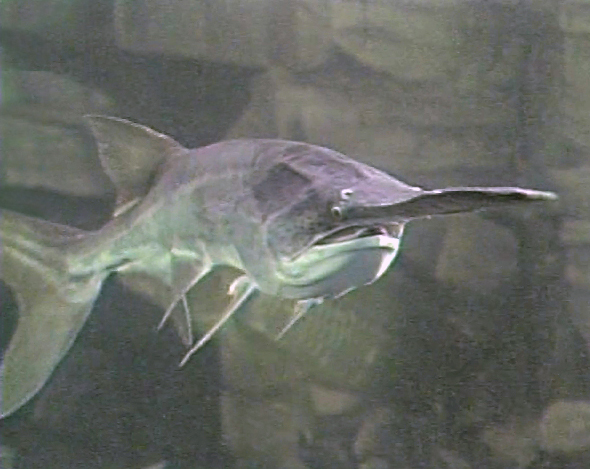|
Ray-finned
Actinopterygii (; ), members of which are known as ray-finned fish or actinopterygians, is a class of bony fish that comprise over 50% of living vertebrate species. They are so called because of their lightly built fins made of webbings of skin supported by radially extended thin bony spines called ''lepidotrichia'', as opposed to the bulkier, fleshy lobed fins of the sister clade Sarcopterygii (lobe-finned fish). Resembling folding fans, the actinopterygian fins can easily change shape and wetted area, providing superior thrust-to-weight ratios per movement compared to sarcopterygian and chondrichthyian fins. The fin rays attach directly to the proximal or basal skeletal elements, the radials, which represent the articulation between these fins and the internal skeleton (e.g., pelvic and pectoral girdles). The vast majority of actinopterygians are teleosts. By species count, they dominate the subphylum Vertebrata, and constitute nearly 99% of the over 30,000 extant species o ... [...More Info...] [...Related Items...] OR: [Wikipedia] [Google] [Baidu] |
Osteichthyes
Osteichthyes ( ; ), also known as osteichthyans or commonly referred to as the bony fish, is a Biodiversity, diverse clade of vertebrate animals that have endoskeletons primarily composed of bone tissue. They can be contrasted with the Chondrichthyes (cartilaginous fish) and the extinct placoderms and acanthodians, which have endoskeletons primarily composed of cartilage. The vast majority of extant taxon, extant fish are members of Osteichthyes, being an extremely diverse and abundant group consisting of 45 order (biology), orders, over 435 family (biology), families and 28,000 species. The group is divided into two main clades, the ray-finned fish (Actinopterygii, which makes up the vast majority of extant fish) and the lobe-finned fish (Sarcopterygii, which gave rise to all land vertebrates, i.e. tetrapods). The oldest known fossils of bony fish are about 425 million years old from the late Silurian, which are also transitional fossils showing a dentition, tooth pattern th ... [...More Info...] [...Related Items...] OR: [Wikipedia] [Google] [Baidu] |
Teleostei
Teleostei (; Ancient Greek, Greek ''teleios'' "complete" + ''osteon'' "bone"), members of which are known as teleosts (), is, by far, the largest group of ray-finned fishes (class Actinopterygii), with 96% of all neontology, extant species of fish. The Teleostei, which is variously considered a Division (zoology), division or an infraclass in different taxonomic systems, include over 26,000 species that are arranged in about 40 order (biology), orders and 448 family (biology), families. Teleosts range from giant oarfish measuring or more, and ocean sunfish weighing over , to the minute male anglerfish ''Photocorynus spiniceps'', just long. Including not only torpedo-shaped fish built for speed, teleosts can be flattened vertically or horizontally, be elongated cylinders or take specialised shapes as in anglerfish and seahorses. The difference between teleosts and other bony fish lies mainly in their jaw bones; teleosts have a movable premaxilla and corresponding modifications ... [...More Info...] [...Related Items...] OR: [Wikipedia] [Google] [Baidu] |
Holostei
Holostei is a group of ray-finned bony fish. It is divided into two major clades, the Halecomorphi, represented by the single living genus, '' Amia'' with two species, the bowfins (''Amia calva'' and '' Amia ocellicauda''), as well as the Ginglymodi, the sole living representatives being the gars (Lepisosteidae), represented by seven living species in two genera ('' Atractosteus'', '' Lepisosteus''). The earliest members of the clade, which are putative " semionotiforms" such as '' Acentrophorus'' and '' Archaeolepidotus'', are known from the Middle to Late Permian and are among the earliest known neopterygians. Holostei was thought to be regarded as paraphyletic. However, a recent study provided evidence that the Holostei are the closest living relatives of the Teleostei, both within the Neopterygii. This was found from the morphology of the Holostei, for example presence of a paired vomer. Holosteans are closer to teleosts than are the chondrosteans, the other group ... [...More Info...] [...Related Items...] OR: [Wikipedia] [Google] [Baidu] |
Neopterygii
Neopterygii (from Greek νέος ''neos'' 'new' and πτέρυξ ''pteryx'' 'fin') is a subclass of ray-finned fish (Actinopterygii). Neopterygii includes the Holostei and the Teleostei, of which the latter comprise the vast majority of extant fishes, and over half of all living vertebrate species. While living holosteans include only freshwater taxa, teleosts are diverse in both freshwater and marine environments. Many new species of teleosts are scientifically described each year. The potentially oldest known neopterygian is the putative " semionotiform" '' Acentrophorus varians'' from the Middle Permian of Russia; however, one study incorporating morphological data from fossils and molecular data from nuclear and mitochondrial DNA, places this divergence date at least 284 mya (million years ago), during the Artinskian stage of the Early Permian. Another study suggests an even earlier split (360 myr ago, near the Devonian-Carboniferous boundary). Evolution a ... [...More Info...] [...Related Items...] OR: [Wikipedia] [Google] [Baidu] |
Chondrostei
Chondrostei is a subclass of non- neopterygian ray-finned fish. While the term originally referred to the paraphyletic grouping of all non-neopterygian ray-finned fish, it was redefined by Patterson in 1982 to be a clade comprising the Acipenseriformes (which includes sturgeon and paddlefish) and their extinct relatives. Taxa commonly suggested to represent relatives of the Acipenseriformes include the Triassic marine fish '' Birgeria'' and the Saurichthyiformes, but their relationship with the Acipenseriformes has been strongly challenged on cladistic grounds. Coccolepididae, a group of small weakly ossified Jurassic and Cretaceous fish found in both marine and freshwater environments, have also been suggested to be close relatives of the Acipenseriformes. However, this has never been subject to cladistic analysis. Near & Thacker (2024) also recovered the ptycholepiform '' Boreosomus'' as a stem-acipenseriform. The following taxa are known: * Subclass Chondrostei ** Genus � ... [...More Info...] [...Related Items...] OR: [Wikipedia] [Google] [Baidu] |
American Paddlefish
The American paddlefish (''Polyodon spathula''), also known as a Mississippi paddlefish, spoon-billed cat, or spoonbill, is a species of ray-finned fish. It is the last extant taxon, living species of paddlefish (Polyodontidae). This family is most closely related to the sturgeons; together they make up the order (biology), order Acipenseriformes, which are one of the most Basal (phylogenetics), primitive living groups of ray-finned fish. Fossil records of other paddlefish species date back 125 million years to the Early Cretaceous, with records of ''Polyodon'' extending back 65 million years to the early Paleocene. The American paddlefish is a smooth-skinned freshwater fish with an almost entirely cartilage, cartilaginous skeleton and a paddle-shaped rostrum (anatomy), rostrum (snout), which extends nearly one-third its body length. It has been referred to as a freshwater shark because of its heterocercal tail or caudal fin resembling that of sharks, though it is not closely rel ... [...More Info...] [...Related Items...] OR: [Wikipedia] [Google] [Baidu] |
Actinopteri
Actinopteri () is the sister group of Cladistia (bichirs) in the class Actinopterygii (ray-finned fish). Dating back to the Permian period, the Actinopteri comprise the Chondrostei (sturgeons and paddlefish), the Holostei ( bowfins and gars), and the teleosts; in other words, all extant ray-finned fish other than the bichirs. In this clade the lungs have evolved into a swim bladder. Characters of Actinopteri include paired fin structure, a single dorsal fin, fulcra, a large median gular and numerous branchiostegals, ganoid scales, and a valvula cerebelli in the brain. Classification The following cladogram summarizes the evolutionary relationships of extant Actinopteri. Divergence time for each clade In biology, a clade (), also known as a Monophyly, monophyletic group or natural group, is a group of organisms that is composed of a common ancestor and all of its descendants. Clades are the fundamental unit of cladistics, a modern approach t ... in mya are based on: ... [...More Info...] [...Related Items...] OR: [Wikipedia] [Google] [Baidu] |
Cladistia
Cladistia is a subclass of bony fishes whose only living members are the bichirs of tropical Africa. Their major synapomorphies are a heterocercal tail in which the dorsal fin has independent rays, and a posteriorly elongated parasphenoid. Cladistia are the earliest diverging branch of living Actinopterygii, and are thought to have diverged from the Actinopteri, the group which includes all other living ray finned fish, by the Carboniferous. However, the fossil range for the only extant order ( Polypteriformes) is comparatively young, only reaching as far back as the mid-Cretaceous of South America and Africa, and the two extant genera of bichir only diverged around the Miocene. Aside from bichirs, other extinct fish groups thought to be members of the group include the Scanilepiformes, known from Triassic (and possibly Permian) of the Northern Hemisphere. The Guildayichthyiformes of Carboniferous North America are also sometimes considered cladistians, but this is thought ... [...More Info...] [...Related Items...] OR: [Wikipedia] [Google] [Baidu] |
Teleosteomorpha
Teleosteomorpha is an infraclass of ray-finned fishes containing all teleost fish and their closest extinct relatives. Also in this group are two diverse Mesozoic fish orders, the Aspidorhynchiformes and the Pachycormiformes. Several other non-teleostomorph teleosteans existed throughout the Mesozoic, although not as dominant as the two main clades in the group. Shared morphological features of this group include a autosphenotic bone lacking a dermal component, the lack of a canal bearing part of the antorbital bone, the lack of vertebral centra fused into the occipital condyle in adult individuals, and each hypural (caudal fin support) being articulated with caudal rays. The oldest known teleosteomorph is '' Prohalecites'' from the Triassic of Italy. The last surviving non-teleostean teleosteomorph was '' Belonostomus'', which survived into the Late Paleocene. Taxonomy Cladogram of Teleosteomorpha after Sferco et al. 2021: The cladogram below is simplified after a phylogen ... [...More Info...] [...Related Items...] OR: [Wikipedia] [Google] [Baidu] |
Vertebrate
Vertebrates () are animals with a vertebral column (backbone or spine), and a cranium, or skull. The vertebral column surrounds and protects the spinal cord, while the cranium protects the brain. The vertebrates make up the subphylum Vertebrata with some 65,000 species, by far the largest ranked grouping in the phylum Chordata. The vertebrates include mammals, birds, amphibians, and various classes of fish and reptiles. The fish include the jawless Agnatha, and the jawed Gnathostomata. The jawed fish include both the Chondrichthyes, cartilaginous fish and the Osteichthyes, bony fish. Bony fish include the Sarcopterygii, lobe-finned fish, which gave rise to the tetrapods, the animals with four limbs. Despite their success, vertebrates still only make up less than five percent of all described animal species. The first vertebrates appeared in the Cambrian explosion some 518 million years ago. Jawed vertebrates evolved in the Ordovician, followed by bony fishes in the Devonian. T ... [...More Info...] [...Related Items...] OR: [Wikipedia] [Google] [Baidu] |
Caulophryne
''Caulophryne'' is a genus of marine ray-finned fishes belonging to the family Caulophrynidae, the fanfins or hairy anglerfishes. These fishes are found throughout the non-polar oceans of the world. Taxonomy ''Caulophryne'' was first proposed as monospecific genus in 1896 by the American ichthyologists George Brown Goode and Tarleton Hoffman Bean when the described ''Caulophryne jordani''. The holotype of ''C. jordani'' was collected from the Gulf Stream off Long Island, New York at 39°27'N, 71°15'W, Albatross station 2747 from a depth between . ''Caulophryne'' and '' Robia'' are the two genera making up the family Caulophrynidae. The 5th edition of ''Fishes of the World'' classifies the Caulophrynidae within the suborder Ceratioidei of the order Lophiiformes, the anglerfishes. Etymology ''Caulophryne'' is a combination of ''caulis'', which mean" stem", an allusion to the stem-like base of the illicium, with ''phryne'', meaning "toad", a suffix commonly used in the names of ... [...More Info...] [...Related Items...] OR: [Wikipedia] [Google] [Baidu] |
Diplodus Vulgaris
''Diplodus vulgaris'', the common two-banded sea bream, is a species of marine ray-finned fish belonging to the Family (biology), family Sparidae, which includes the seabreams and porgies. This species is found in the northeastern Atlantic Ocean and the Mediterranean. It is an important species for fisheries and is grown in aquaculture. Taxonomy ''Diplodus vulgaris'' was first formally Species description, described in 1817 as ''Sparus vulgaris'' by the French naturalist Étienne Geoffroy Saint-Hilaire with the Type locality (biology), type locality given as the Mediterranean Sea off Egypt. Within the genus ''Diplodus'' this species is most closely related to ''Diplodus prayensis, D. prayensis'', which replaces it in Cape Verde, and these form a clade with the ''Diplodus sargus, D.sargus'' species complex. The genus ''Diplodus'' is placed in the family Sparidae within the Order (biology), order Spariformes by the 5th edition of ''Fishes of the World''. Some authorities classify th ... [...More Info...] [...Related Items...] OR: [Wikipedia] [Google] [Baidu] |






